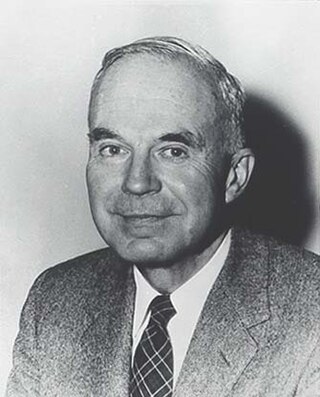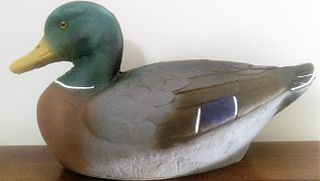Related Research Articles

Gateway Arch National Park is an American national park located in St. Louis, Missouri, near the starting point of the Lewis and Clark Expedition.

A helmet is a form of protective gear worn to protect the head. More specifically, a helmet complements the skull in protecting the human brain. Ceremonial or symbolic helmets without protective function are sometimes worn. Soldiers wear combat helmets, often made from Kevlar or other lightweight synthetic fibers.

The Brodie helmet is a steel combat helmet designed and patented in London in 1915 by Latvian inventor John Leopold Brodie. A modified form of it became the Helmet, Steel, Mark I in Britain and the M1917 Helmet in the US. Colloquially, it was called the shrapnel helmet, battle bowler, Tommy helmet, tin hat, and in the United States the doughboy helmet. It was also known as the dishpan hat, tin pan hat, washbasin and Kelly helmet. The German Army called it the Salatschüssel. The term Brodie is often misused. It is correctly applied only to the original 1915 Brodie's Steel Helmet, War Office Pattern.

The Stahlhelm is a German military steel combat helmet intended to provide protection against shrapnels and fragments or shards of grenades. The term Stahlhelm refers both to a generic steel helmet and more specifically to the distinctive German military design.

The M1 helmet is a combat helmet that was used by the U.S. military from World War II until 1985, when it was succeeded by the PASGT helmet. The M1 helmet has become an icon of the US military, with its design inspiring other militaries around the world.

The pith helmet, also known as the safari helmet, salacot, sola topee, sun helmet, topee, and topi is a lightweight cloth-covered helmet made of sholapith. The pith helmet originates from the Spanish military adaptation of the native salakot headgear of the Philippines.

Walker Kirtland Hancock was an American sculptor and teacher. He created notable monumental sculptures, including the Pennsylvania Railroad World War II Memorial (1950–52) at 30th Street Station in Philadelphia, and the World War I Soldiers' Memorial (1936–38) in St. Louis, Missouri. He made major additions to the National Cathedral in Washington, D.C., including Christ in Majesty (1972), the bas relief over the High Altar. Works by him are presently housed at the U.S. Military Academy at West Point, the Library of Congress, the U.S. Supreme Court, and the United States Capitol.

A boonie hat or booney hat is a type of wide-brim sun hat commonly used by military forces in hot tropical climates. Its design is similar to a bucket hat but with a stiffer brim.

A sun hat is any hat or headgear specifically designed to shade the face, neck and shoulders from direct sunlight, usually with a circumferentially-protruding semi-rigid brim that can range from small to large, but as a general guideline around 4 to 7 in in width.

The Southeast Missourian is a 3-day per week newspaper published in Cape Girardeau, Missouri, and serves the southeastern portion of Missouri.

International Hat Company, formerly named the International Harvest Hat Company, was a St. Louis, Missouri-based manufacturer of commercial hats and military helmets. The company was one of the largest hat manufacturers in the United States and, at one time, the largest manufacturer of harvest hats in the world. It is best remembered for its design and mass production of tropical shaped, pressed fiber military sun helmets for service members of the United States Army, Marines, and Navy during and after World War II. Additionally, the American owned company was a major producer of harvest hats, straw hats, fiber sun hats, enameled dress hats, baseball caps, and earmuffs throughout most of the 20th century. However, it is the International Hat military sun helmets that have become the most notable collector's items.

Andrew "Cap" Tilles was an American business magnate and philanthropist. At an early age, Tilles adopted his childhood nickname of Cap, which he used for the rest of his life. Tilles revolutionized the United States horse racing industry. Later in life, Tilles dedicated his resources to philanthropic projects in St. Louis, Missouri. In 1896, he co-founded and actively ran an investment syndicate that dominated the US horse racing industry through World War I. The investment syndicate became known in the media as the "Big Three," after its three principal partners: Louis A. Cella, Samuel W. Adler, and C. A. Tilles. The syndicate was officially known as C.A.T., which was short for the Cella, Adler, and Tilles partnership.
Frank G. Pellegrino was an American engineer, inventor, and industrialist. He served as president of the General Fibre Company. During his tenure, General Fibre became the largest manufacturer of duck decoy models in the United States, producing over a million per year in the 1950s. Pellegrino also negotiated the sale of the International Hat Company to Interco, Inc. Additionally, he created a variety of inventions related to the plastic molding industry. Most notably, Pellegrino invented automated assembly line machines in the formation of plastic objects. These machines were used by General Fibre in the production of a variety of plastic models, duck decoys, and Michelob paraphernalia throughout the 1960s to 1980s.

Frank Paul Pellegrino was an American businessman. He was the longest-serving chairman and CEO of the International Hat Company. Pellegrino built numerous factories across Southeastern Missouri, managing the company into becoming the largest manufacturing employer in the region by the 1960s.

Maria Pellegrino Park is a municipal park in the western of portion of Marble Hill, Missouri. The park is the largest of the five reserves in the municipality. Pellegrino Park features tennis courts, pavilions, playground equipment, picnic tables, restroom facilities, forest, and a two acre lake for fishing. The park began planning in 1969 and was established in 1972 on 31 acres of city owned land. The park was founded by Frank Pellegrino, the former president and chairman of the International Hat Company of St. Louis. The company operated one of its factories in Marble Hill until 1989, employing approximately 300 people. The park was built on land donated by the company located directly adjacent to International Hat's manufacturing plant. Pellegrino named the park in honor of his Italian-American mother, Maria Pellegrino. The plaque located at the entrance gate reads that the park is dedicated to her "as an expression of her concern for the betterment of her fellowman."
Tilles Memorial City Park, also known as George Tilles Jr. Memorial Park, is the oldest municipal park in Oran, Missouri, United States.

General Fibre Company, also known as the General Moulding Company, was an American manufacturer of a wide variety of fiber and plastic molded products. The company was known for its popular Ariduk brand of duck and goose decoys. During World War II, in partnership with the International Hat Company, General Fibre was converted into a war factory for the production of military sun helmets. Conjointly, the companies were among the largest manufacturers and suppliers of American military pressed fiber sun helmets during World War II. In the post-war period, the company made an early entry into the emerging plastic injection molding industry, making the transition in material production from fiber to plastic goods. During the 1960s, the company designed and patented advances in methods of producing pulp articles in the plastics industry. Concurrently, General Fibre became a supplier to Ford Motor Company, in the manufacture of plastic interiors. The General Fibre Company closed in 1985.

The Royal Marines uniform is the standardised military dress worn by members of the Royal Marines.

The American fiber helmet is a type of sun helmet made of pressed fiber material that has been used as part of the military uniform by various branches and units of the United States Armed Forces from 1934 to the present day. As of 2017, the helmet continues to be worn by U.S. military rifle range cadres, as an icon for marksmanship excellence. The helmet is technically not a pith helmet, insofar as it is not constructed from pith material. However, in the more generic sense of design style, this type of sun helmet is modeled similarly to one and thus often referred to in common use as a pith helmet. Additionally, the helmet is not a combat helmet, insofar as it was not originally designed to protect the head during combat. However, the helmet was nonetheless assigned, at various times in the 1930s and 1940s, as combat gear for use in active theaters.

Hawley Products Company is a manufacturer of loudspeaker components. The company is the oldest manufacturer of loudspeaker diaphragms in the world. Historically, the company produced a variety of products composed of fibrous or plastic materials, including helmets, globes, microwave trays, automotive components, suitcases, and furniture. Most notably, the company is remembered for its World War II military helmets and helmet liners used by soldiers in the United States Army, Marines, and Navy. Hawley Products is the original designer of the M1 steel helmet liner. The company is also one of the two original manufacturers of the M1 steel helmet liner, alongside General Fibre Company. Additionally, Hawley Products designed and manufactured several versions of the pressed fiber military sun helmet used by the US military during World War II. The military continued to use this sun helmet throughout most of the 20th century, including Naval personnel during the Persian Gulf War.
References
- 1 2 The Missourian (November 9, 1946). "Oran Gets Factory". The Southeastern Missourian. Retrieved 17 September 2016.
- ↑ Suciu 2009, p. 43.
- ↑ "The Oran Chamber of Commerce: George Tilles Jr. Memorial Park Dedication Ceremony". Southeastern Missourian. June 27, 1965. Retrieved 18 September 2016.
- 1 2 3 The Missourian (September 29, 1962). "$10,000 Gift, Voter Approval Bring City Park". Southeastern Missourian. Retrieved 18 September 2016.
- 1 2 International Hat Company 1942, p. 3.
- ↑ Tulkoff 2003, p. 107.